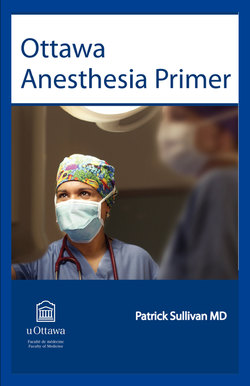Читать книгу Ottawa Anesthesia Primer - Patrick Sullivan - Страница 101
На сайте Литреса книга снята с продажи.
Tracheal intubation:
ОглавлениеIdentify the important patient-specific goals for intubation. Concentrating on a subgroup of these goals may minimize the use of unnecessary medications and their potential side effects. Prior to proceeding, plan and prepare backup airway plans and rescue medications to manage adverse events. This may include having specialized rescue airway equipment available for use and the preparation of additional sedative medications or vasoactive medications to manage deviations in hemodynamic parameters.
Once the above goals are identified, medications can be selected to achieve these goals. A patient is identified as having a “reassuring airway” when the airway examination and clinical history fail to identify any predictors of difficulty with bag-mask ventilation or intubation (see Chapter 6).
To illustrate a goal-directed patient-oriented approach to medication administration for tracheal intubation, consider a healthy fasted adult with a reassuring airway who requires elective tracheal intubation. The identified goals may include general anesthesia (unconsciousness), attenuation of the sympathetic response to intubation (control of heart rate and blood pressure), avoidance of an overdose of medications (avoidance of bradycardia and hypotension), muscle relaxation, rapid recovery from the effects of muscle relaxation, and tracheal intubation. A rational goal-directed plan for this patient can then be formulated and might consist of an intravenous anesthetic agent, such as propofol 1-2 mg∙kg-1, an opioid, such as fentanyl 1-3 µg∙kg-1, and a muscle relaxant, such as succinylcholine 1 mg∙kg-1. The dose of propofol and fentanyl administered to the patient can be titrated over a brief period based on the patient’s clinical response. Alternatively, if the clinician wishes to avoid some of the undesirable side effects of succinylcholine (e.g., myalgia) and accept a longer duration of muscle relaxation, a nondepolarizing muscle relaxant, such as rocuronium 0.3 – 0.6 mg∙kg-1 may be substituted in place of succinylcholine.
Chapters 11, 12, and 14 provide information about the pharmacologic properties of medications commonly used for tracheal intubation. It is important to have an understanding of the pharmacology of these medications and the synergistic effects these medications have when they are administered together. The effect of medication synergism often mandates a reduction in the amount of one or both medications administered in order to avoid a relative overdose. See Chapter 14 for a discussion of the synergistic effects of propofol and remifentanil. Midazolam, opioids (e.g., fentanyl), intravenous lidocaine, and propofol all exhibit synergism when administered together.
Other adjuvant medications may be used to attenuate the sympathetic response to intubation. Common examples include the intravenous administration of lidocaine and midazolam prior to the induction of anesthesia. Lidocaine in a dose of 1-1.5 mg∙kg-1 may be administered 3 - 4 min prior to intubation. The use of lidocaine may limit the hemodynamic response (elevation of blood pressure [BP] and heart rate [HR]), the ICP response (elevation in ICP), and airway responses (bronchospasm) to tracheal intubation. The administration of a benzodiazepine, such as midazolam, in a dose of 20 – 40 µg∙kg-1 may be used for both its anxiolytic properties prior to induction of anesthesia as well as its synergistic effect with other anesthetic agents. Administration of these medications may require a reduction in the dose of other anesthetic agents, such as propofol and opioids, to avoid the potential of a relative anesthetic overdose.
It is important to understand the pharmacologic properties of the different medications being used and the time needed for these medications to reach their peak effect. Typically, fentanyl and lidocaine will reach their peak effect approximately 3 – 4 min after administration. Laryngoscopy can then be timed 4 – 5 min after their administration. The effect of opioids, benzodiazepines, and lidocaine may result in a depression in the level of consciousness and respiration, and the patient should be closely monitored during this period, encouraged to breathe, and / or supported with positive pressure ventilation.
In the real world, the majority of patients will have other additional issues to consider when planning tracheal intubation. The patient’s condition and the clinical setting will have a major influence on the specific goals for intubation. Some of the considerations influencing the technique of intubation and choice of medications include:
Urgency of intubation
Anticipated difficulty with bag-mask ventilation
Anticipated difficulty with direct laryngoscopy
Risk of aspiration
Identified contraindications to medications (e.g., succinylcholine)
Whether or not a muscle relaxant should be used
Whether a short or intermediate period of muscle paralysis is desirable
Hemodynamic stability of the patient
Medical history and coexisting conditions (e.g., aortic stenosis, opioid tolerance)
Resources available (e.g., airway equipment, monitoring, personnel)
The patient-specific goals for intubation and the restrictions imposed by the above considerations frequently create conflicts. These conflicts are important to identify. Once identified, each conflict can be approached as a challenge to overcome.
In the context of the identified patient-specific goals and considerations for intubation, additional questions may need to be addressed. Examples include:
What is the anticipated hemodynamic response using these induction medications?
Is there a risk of injury with the proposed plan (e.g., exacerbation of raised ICP in a patient with elevated ICP)?
Is the patient at high risk for gastric aspiration (see Chapters 9 and 25)?
Are the resources (e.g., location, equipment, monitoring, and personnel) adequate to perform intubation safely? If time permits, consider moving the patient to a location with appropriate resources.
Are there other investigations required prior to performing intubation (e.g., identification of associated injuries in the trauma patient)?
Is difficulty with bag-mask ventilation and intubation anticipated? Consider alternative techniques for intubation, such as the use of airway adjuvants or fiberoptic intubation, with appropriate local anesthesia and sedation (see Chapter 6).
What are the plans for managing the patient after tracheal intubation (e.g., emergency patient requiring admission to the intensive care unit [ICU])?
The following case discussions illustrate how a goal-directed patient-oriented approach can be used in the context of identified patient considerations affecting airway management.
